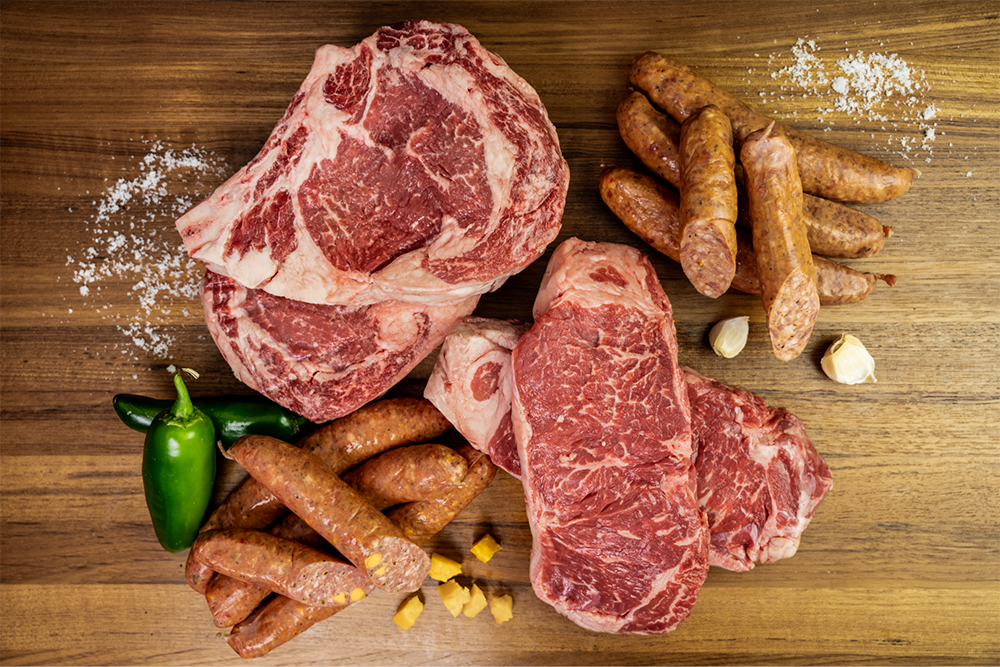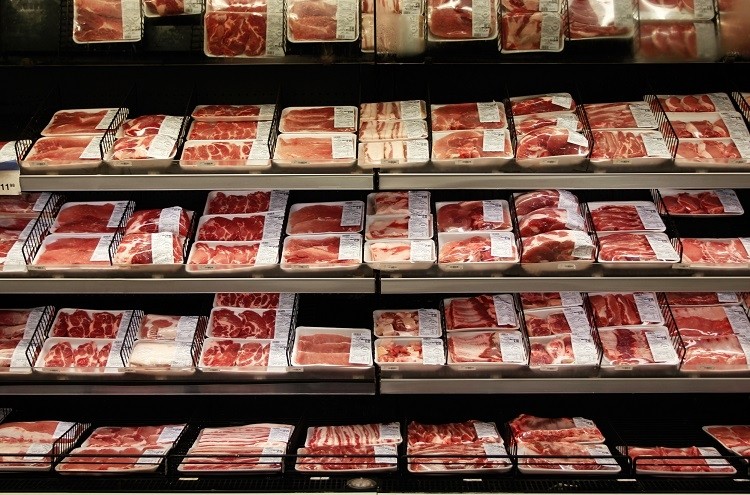Bagley Farms Meat Market Edwardsville IL: Your Trusted Source for High-Quality Meats
Bagley Farms Meat Market Edwardsville IL: Your Trusted Source for High-Quality Meats
Blog Article
Discover the Art of the Butcher's Cut in a Modern Meat Market
In the ever-evolving landscape of modern-day meat markets, the butcher's cut has actually transcended its traditional roots, combining old-time workmanship with modern methods. What really sets the modern-day butcher apart is their ability to forge a deeper connection between consumers and the origins of their meat.
Development of Butchery Techniques
The advancement of butchery techniques shows an abundant tapestry of advancement and adaptation driven by improvements in technology, modifications in consumer demand, and a much deeper understanding of meat science. Historically, butchery was a craft gave through generations, with techniques sharpened over centuries to maximize return and taste. The industrial change ushered in mechanization, changing typical practices and allowing large processing.
The mid-20th century saw butchery strategies even more improved by scientific insights right into muscle biology and meat aging, improving both inflammation and taste. Developments like vacuum cleaner product packaging and refrigeration prolonged item shelf-life, permitting butchers to diversify offerings and enhance quality assurance. This duration also marked the surge of specialized equipment, such as band saws and meat slicers, which boosted accuracy and efficiency in meat handling.

Digital systems currently aid in tracking animal provenance and optimizing cuts to fulfill certain consumer preferences. In addition, a rebirth in artisanal butchery has emerged, mixing typical skills with contemporary understanding to provide to consumers seeking moral and sustainable meat options.
Comprehending Meat Cuts
Comprehending the details of meat cuts is necessary for both butchers and customers seeking top quality and value. For butchers, exact cuts reflect skill and regard for the craft, ensuring marginal waste and optimal yield.

Recognizing muscle structure is critical; muscles utilized a lot more regularly by the pet have a tendency to be tougher and are best suited for slow cooking approaches, while less-used muscular tissues, like those located in the loin, are extra tender and ideal for grilling or roasting. Familiarity with these distinctions empowers consumers to make informed choices, improving their culinary undertakings.
Picking Quality Meat
Selecting the appropriate meat entails greater than just picking a visually appealing item from the display screen. bagley farms meat market edwardsville il. The art of selecting quality meat calls for a critical eye and expertise of specific characteristics that represent quality and excellence. First of all, official site focus on the shade; beef should have a bright, cherry-red tone, while lamb should show a soft pink tone, and pork a light pink. This indicates the meat is fresh and hasn't been revealed to oxygen for also lengthy.
Secondly, consider the marbling, which refers to the white streaks of fat within the muscular tissue. Correct marbling is a key sign of tenderness and flavor, as it melts during cooking, improving the meat's juiciness. Bear in mind, greater marbling frequently correlates with superior high quality cuts, such as USDA Prime.
Appearance is an additional critical factor; meat ought to feel solid to the touch, not slimy or excessively soft. Furthermore, bear in mind the fragrance. Fresh meat must have a tidy, neutral scent, devoid of any sour or off-putting odors.
Matching Cuts With Cooking Methods

Conversely, harder cuts like brisket and chuck roast are rich in collagen, which breaks down into jelly when cooked gradually. These cuts are ideal for braising or slow roasting, allowing the meat to tenderize over time and develop deep, complex flavors. Similarly, cuts such as short ribs and pork shoulder fare well with slow-cooking methods, where expanded cooking times transform their robust structures into succulent dishes.
Lamb shanks and oxtail, which need long term cooking to soften, are ideal prospects for stewing or slow-moving simmering. These methods coax out abundant, hearty flavors while keeping wetness. By comprehending the one-of-a-kind characteristics of each cut, chefs and home cooks alike see this site can boost their culinary developments, making certain each meal is both satisfying and memorable.
The Butcher's Duty Today
Browsing the progressing landscape of the contemporary meat market, the butcher's function today prolongs past mere prep work of cuts. Contemporary butchers are cooking artisans, instructors, and supporters for sustainable practices. They link the gap between the ranch and the fork by guaranteeing moral sourcing, comprehending animal husbandry, and focusing on transparency in the supply chain. This change shows the growing customer demand for quality over amount, where provenance and animal well-being are vital.
In enhancement to crafting exact cuts, butchers now involve directly with consumers, supplying cooking recommendations and tailoring options to match specific requirements and preferences. Their competence in meat aging, marbling, and flavor accounts equips consumers to make informed decisions, boosting their culinary experiences. This personalized service exhibits the butcher's evolving function as a relied on expert in the kitchen area.
In addition, butchers are pivotal in lessening waste, making use of whole animals to produce varied products such as sausages and supplies. This thorough method not just respects the animal however additionally aligns with modern sustainability goals. This way, the modern-day butcher symbolizes both custom and advancement, adapting to an ever-changing market while protecting the artistry and integrity of their craft.
Verdict
Proficiency in comprehending diverse discover here meat cuts and high quality signs equips butchers to provide informed recommendations, straightening specific cuts with optimum food preparation methods. By recognizing historical practices while embracing modern needs, the butcher's function remains essential in today's sophisticated meat market.
Report this page